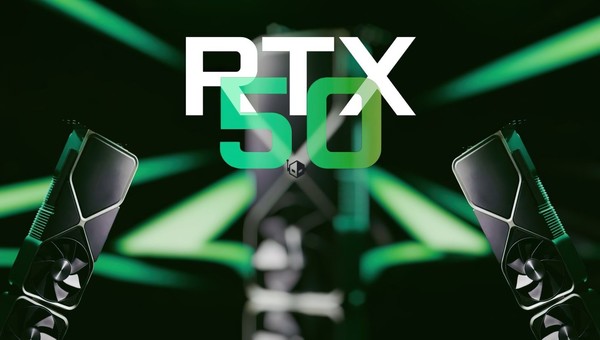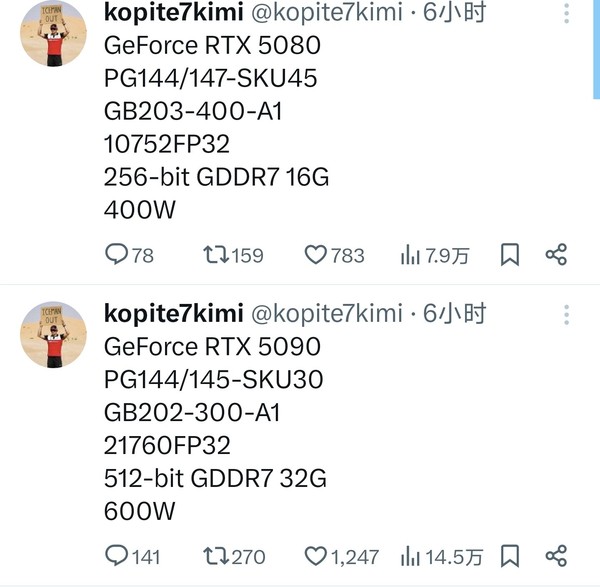Nvidia is gearing up to launch its next-generation GeForce RTX 50 series graphics cards, codenamed “Blackwell,” with significant upgrades in performance. Among the most anticipated models are the Nvidia RTX 5090 and Nvidia RTX 5080. Leaker Kopite7kimi has recently revealed detailed specifications for these two flagship graphics cards, giving us a clear view of what to expect.
Nvidia RTX 5090 Specifications: The Ultimate Powerhouse
The Nvidia RTX 5090 will serve as the flagship of the GeForce RTX 50 series. The graphics card will feature the PG144/145-SKU30 PCB design and will be powered by the GB202-300-A1 GPU core. According to the leaked details, the RTX 5090 will feature 170 stream processor units (SMs), with a total of 21,760 cores—a slight reduction of 11.4% from the RTX 4090’s AD102 full core.
One of the standout features of the Nvidia RTX 5090 specifications is its impressive memory configuration. The card will come equipped with 32GB of GDDR7 memory running on a 512-bit bus interface. The expected memory bandwidth will range between 28-32 Gbps, potentially achieving up to 2.00 TB/s bandwidth, making it one of the fastest graphics cards on the market. Despite its powerful features, the RTX 5090 will adopt a dual-slot cooling design, offering a more compact form factor while maintaining high cooling performance. The graphics card is expected to consume 600W of power, though actual gaming power consumption may be lower.
Nvidia RTX 5080 Specifications: Performance at a Lower Cost
On the other hand, the Nvidia RTX 5080 will cater to enthusiasts seeking high performance at a relatively lower cost. Built on the PG144/147-SKU45 PCB, this graphics card will feature the GB203-400-A1 GPU core, utilizing the full GB203 core with 84 stream processor units and 10,752 cores. The difference in cores between the RTX 5090 and RTX 5080 is striking, with the 5080 having 51% fewer cores, leading to a notable performance gap.
In terms of memory, the RTX 5080 will offer 16GB of GDDR7 memory, operating on a 256-bit bus interface. The memory bandwidth is expected to range between 896 GB/s and 1024 GB/s, offering excellent performance for most gaming and productivity tasks. The RTX 5080 will also see an increase in power consumption, with a total TBP of 400W, which is higher than its predecessors.
While the RTX 5080 aims to strike a balance between price and performance, Nvidia will need to carefully price it to remain competitive. Many consumers are hoping for the RTX 5080 to come in under the $1,000 mark, especially given the criticism of the RTX 4080’s cost-effectiveness. However, with the high-end market becoming increasingly competitive, hitting this price point may prove challenging.
Conclusion: A Competitive Market Ahead
As Nvidia prepares to release the RTX 5090 and RTX 5080, the performance gap between the two models is evident. The RTX 5090 will likely cater to the ultra-high-end segment, offering top-tier performance and capabilities, while the RTX 5080 will provide a slightly toned-down experience for gamers and professionals looking for excellent performance without breaking the bank.
With Nvidia RTX 5090 specifications set to push the boundaries of graphics card technology, the race for the best GPU continues. As the official release date draws closer, it will be interesting to see how these new models compete in the ever-evolving GPU market.









